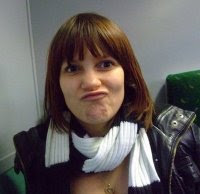"In front of the camera, nothing is accidental"
During our production meetings we also had to decide on a main job for each member of the group to undertake. The jobs were:
- Technical Producer
- Art Director
- Post Production Producer
- Content Producer
I originally went for the Post Production Producer, but later on in the week swapped with Amy, who was an Art Director, as we felt we were better suited to the others job.
In an afternoon session with Jon Dempsey he talked to us about the 5 steps that has to happen on the Production Design.
Step 1 - Broad Strokes
This step is where you need to think about colours and what you want the productions overall feeling to be like. We were shown a scene from "Lost in Translation", where we were told to descrobe how the colours related to the feel of the production. This film uses mainly cool colours, such as greys, pale blues and purples. This relates to the film content as the main character is feeling alone in a new country and is "lost".
The things you need to think about in this stage is:
What colours do you want to appear on screen?
What tonal angles?
How do you want the production to appear?
You need to think about all of this otherwise your production will look muddled due to mise-en-scene and a mixture of colours that don't complement the production.
You may also want to include visual motifs. This is a piece of visual design that draws a product to mind or is associated with an image, such as the Nike tick.
Step 2 - Concept Art
This step is where you design the set and how it is going to look by creating a small set design that is to scale of the actual set (1:25 in our case). This is where you have to take everything in consideration in order to design the set; you need to think about camera movement so that they can still get a good shot, alongside the set looking good.
The design of the set needs to add to the theme and the audiences understanding, it cannot distract attention from the actual production. There should be a matte finish so that the lighting does not reflect off the set, and there should not be any bright colours (luminous orange) on the set design.
Drawings of the set you wish to make may also help you to decide of that is what you want as your final design.
Step 3 - Lockdown
This step is where your design is "locked down"; nothing major can change from this stage onwards. The set design is therefore final and everything is as planned; little things may change, but the main large designs and ideas will not change from this point forwards.
There is also a few more points in this stage that needs undertaking. That includes scene breakdown, where you find the locations for each scene. Prop breakdown, where you decide on all the props needed and whether they are action or dressing props. Budget also needs to be considered.
Step 4 - The Team
This is where you decide roles for your team, this includes:
- Production Designer
- Art Director (Production Designer's Number 2)
- Props Master
- Construction Manager
- Lighting Master
There needs to be clear communication between the roles so that everyone knows what they need to do in order to finish the set design.
Step 5 - The Product
This is the final step and is making sure everything is going to plan. This stage is where you build the set, decorate it, erect it, light it and then strike it.
You will also need to remember to think about textures and fittings (it must not reflect!)
You may need to think about how much room you have for the set and for cameras; is there enough room for everything to fit in the studio, and for them to both do there job well?
Are there any specific needs? Such as a studio audience to account for.
Everything needs to be thought about in this stage and slight adjustments may be needed in order for everything to work.

No comments:
Post a Comment